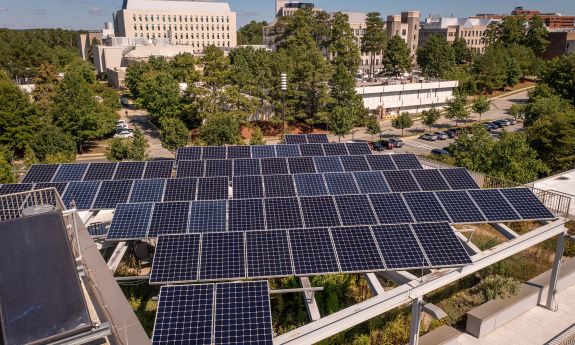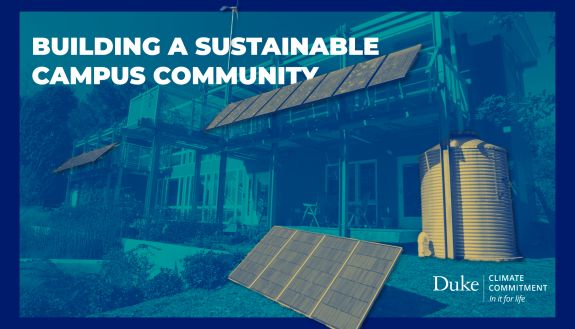Already Looking Ahead to Next Steps
2050 Climate Goals will be broader, more nuanced, and based on the latest science

“Duke’s next-generation climate action plan will also include sustainable operations goals and strategies for areas such as waste, transportation, food, and water,” Batchelor said.
“2024 carbon neutrality is a major milestone that we should celebrate. However, we are already planning for what climate leadership looks like in 2025 and beyond.”
MATTHEW ARSENAULT, assistant director of carbon and sustainability operations
“2024 carbon neutrality is a major milestone that we should celebrate,” said Matt Arsenault, assistant director of carbon and sustainability operations for Duke. “However, we are already planning for what climate leadership looks like in 2025 and beyond.”
One great stride toward Duke’s continued reduction in emissions is an investment in a large solar project that will come online next year. In mid-2025, three large solar arrays built off campus will begin producing renewable energy, providing the equivalent of half of the electricity campus uses. The partnership with Pine Gate Renewables is a 101-megawatt solar system that is expected to generate up to 240,000 megawatt-hours (MWh) of energy each year.


Duke also will continue to seek other sources of renewable electricity, including renewable natural gas, which comes from landfills or agriculture rather than fossil reserves.
The Operations subcommittee of Duke’s Climate Commitment Advisory Council is now working with Duke leadership to establish a new net-zero target for 2050 during the 2024-2025 academic year. Targets will be created for emission sources that Duke has the most control over, primarily energy used on campus, separate from emissions that are more difficult to reduce, such as commuting and air travel.
The new Climate Action Plan’s other large evolutionary step is including the Duke University Health System and all of its buildings on campus and around the Triangle area. The Health System will establish its own targets towards the larger Duke University climate goal.
“We are excited for the opportunity to move in lockstep with the Health System on the Climate Commitment in a variety of ways, including their greenhouse gas emissions efforts,” Batchelor said. “They have some unique challenges, including many off-campus clinics and outpatient facilities which are leased, making improvements a bit more complicated to coordinate, but not impossible.”
The campus also will continue to move toward LED lighting, which draws far less power, upgrading air handling equipment in buildings, converting to hot water for heating, and possibly even tapping geothermal energy.
RELATED STORIES ON DUKE CARBON NEUTRALITY


